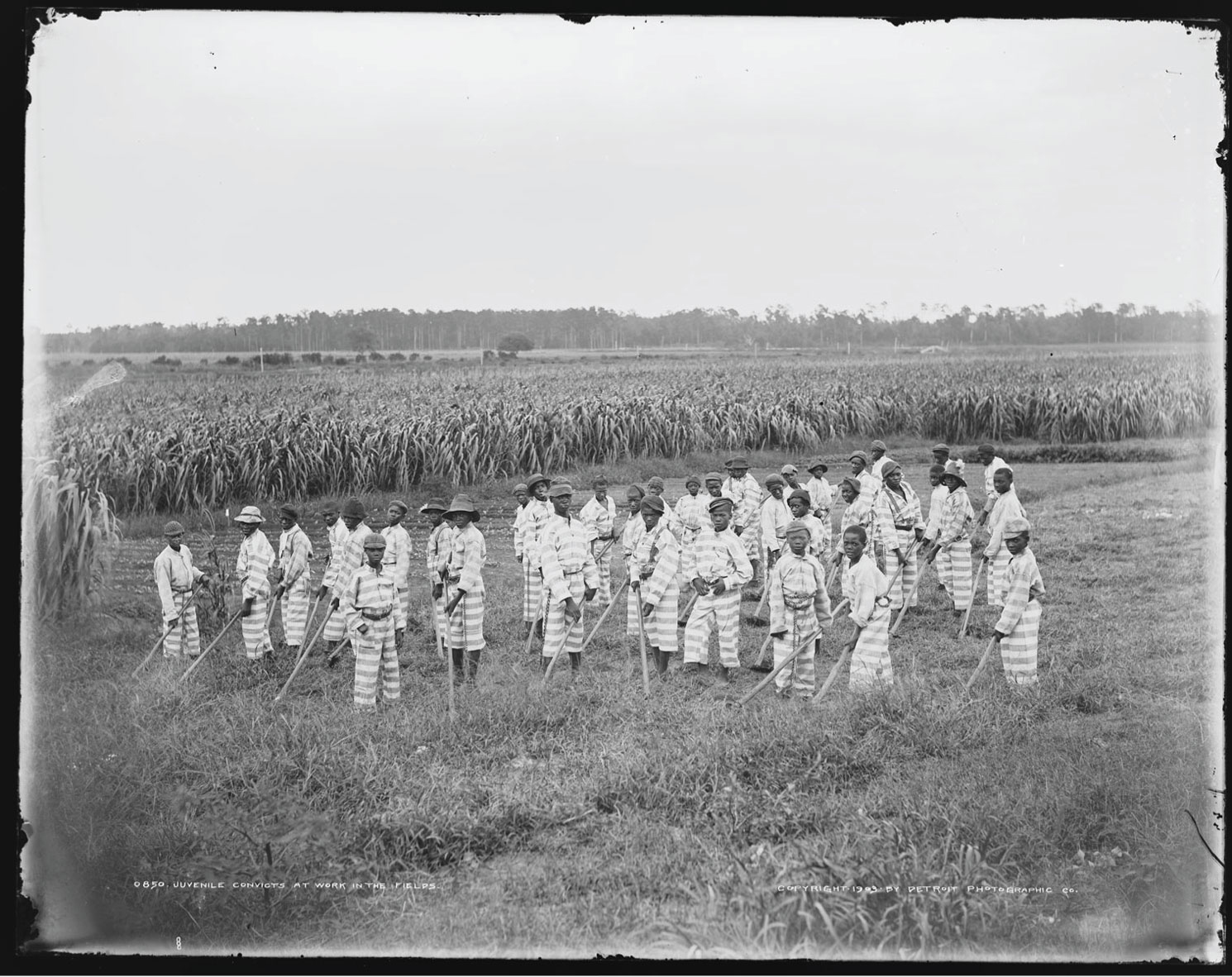“Juvenile Convicts at Work in a Field” (photograph), 1903
Not unlike their adult peers, incarcerated youth made important contributions to the building of modern America during the second industrial revolution. Resembling child workers in the North, who labored in sweatshops and were subjected to hazardous working conditions, southern adolescents faced an equally (if not more) troublesome fate in the South’s prison farms, chain gangs, mines, railroads, brickyards, and turpentine camps. Child prisoners (the majority of whom were African American boys) were forced to work for unregulated periods of time (roughly twelve to sixteen hours each day), provided no (or very little) education, and made to perform the most dangerous of tasks. Some perished as a result of work-related injuries, while others died as a result of violence.
During the late nineteenth and early twentieth centuries, bills were passed to establish state reformatories for juvenile offenders. Progressive reformers and prison authorities frequently petitioned the state to have boys, in particular, separated from “hardened male criminals” and given a real chance at reform. Yet the southern states were unwilling to completely absolve youth prisoners from the incarcerated labor force. Instead, prison farms were contrived, and underage inmates (black and white) were kept at work.

Evaluating the Evidence
Question
0J6UlS/rvb7kS2DnFc+KFFKF9oJ+2FyMzDQzgzGxWSuwNC3LDO1HBv7Y1v5rQHHgM3V++7tbSdmBeQP8ZK5M71boyH6M00LiNKoy+MoFjqt/djjYOmoAjf3QIW4DeIXGzjtJMJQdTeIFs5u3No1JhZ27QwuAZrNkyw22VTJRcLRCEONRZawcUDNeSUbgZ7/7cucGrAIrFxJQxkBsjH5X2xXPy9Mv1AD7G/PSpDMBRgQZ16CXMuGlw6huPrxlWx81C2MZbMVCnxwTV2EnljZk6CXhzL5Z19IB197HqPgsoNS02Uv+rwT9pvo+bv++f/22dP1IKYZsdwuS3WIxdTdnQg==Question
xybNT4VKDGQaV4n9Q8nYdB+k9Wds+U369mFa0w8MkV6bvOSpBXlw5vNs1MyYAevF+Ce+jLCYbiBKY1tg4xzIYIAXh3c+JhDQ